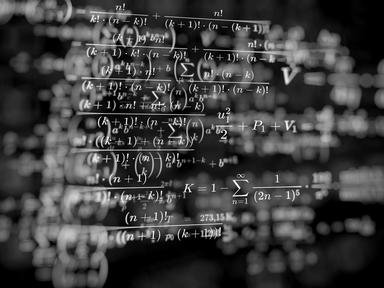Quiz Answer Key and Fun Facts
1. This problem confounded mathematicians of the 1600s/1700s, nearly lived to see its 100th birthday, and brought great fame to its 28-year old solver, Leonhard Euler, who applied new (yet dubiously sound at the time) methods to confront it.
2. This constant, despite being extensively studied in the 1700s and for the centuries that followed, was only proven to be irrational in 1978. The reciprocal of it describes the probability that 3 (sufficiently large) integers will be coprime, or lacking any common nontrivial factors.
3. This famous number theoretic problem and hypothesis has gone proof-free for many years. Due to its age, complexity, and inherent relevance to number theory (the definition specifically refers to elliptic curves), a million dollar bounty has been placed on its head placed by the Clay Mathematics Institute.
4. This constant is not even known to be irrational despite the turn of the second millennium, although it was introduced in 1734.
5. How many times does the integral of 1/ln(x) from 0 to x fall beneath the value of the prime counting function (the number of primes at or under x)?
6. A congruent number is a number that can be used to describe the area of a right triangle with all rational legs, including the hypotenuse. 6 is one such number. What can you say for 150, is it congruent or not?
7. This infinite series' partial sums are bounded between or on 1+log2(x) and 1+log2(x)/2 for the series' well-defined domain of partial sums. It also has an "alternating" expression, where the terms converge to ln(2).
8. This mathematical object, which embarrassed a previous result of Poincaré, is the only object that shares homology with the 3-sphere and has a finite fundamental group, excluding the 3-sphere itself. Particularly, it meant that the term "homology" couldn't be applied in a statement alone to form the same meaning as the Poincaré Conjecture, a very important conjecture (actually a theorem) in topology.
9. If n=1, terminate,
If n=0 mod 2, set n/2 as n and repeat from step one,
If n=1 mod 2, set 3n+1 as n and repeat from step one.
The guess that this algorithm will always terminate is known as what?
10. Within the first million natural numbers, do most numbers tend to have an odd or even number of prime factors? e.g. 18 is 2*3*3, so it has 3 factors, an odd number.
11. Which theorem, if proven true, would render the absolute difference between the integral of 1/ln(x) from 0 to x and the number of primes at or below x at less than or equal to x, to only √(x)*ln(x)?
12. Euler's identity (a famous equality) links which of the following concepts together?
13. These partial differential equations form a big part of the backbone of classical electromagnetism, and includes purely evident nomenclature contributions from Gauss, Ampere, Maxwell, and Faraday.
14. These numbers are used in calculating the sums of powers, such as 1^m+2^m+3^m+...+n^m for a given n and m. They are also all rational, and have inherent connections to the values of the Riemann zeta function.
15. Numbers 3 and 5 are prime, and 3+2=5. 17 and 19 are both prime, and 17+2=19. 29 and 31 are both prime, and 29+2=31. These are all pairs of prime numbers with a gap of size 2. This conjecture states that there are infinitely many primes with any even sized gap. What is it?
Source: Author
Feryll
This quiz was reviewed by FunTrivia editor
gtho4 before going online.
Any errors found in FunTrivia content are routinely corrected through our feedback system.
